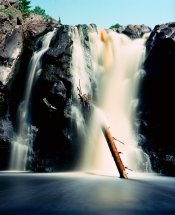d2photographic
Member
Hi all, got a problem and would appreciate any insight!
Can anyone explain this pattern of red dots on my 120 Ektar 100? It shows up only in smooth areas of midtones, like flowing water or mist, and seems to be worst on long exposures. It's a fairly fresh roll (expires 11/19), and in fact an older roll is completely fine, and both were processed at North Coast Photo in CA. What would cause this and how can it be prevented? It's very dispiriting.
Can anyone explain this pattern of red dots on my 120 Ektar 100? It shows up only in smooth areas of midtones, like flowing water or mist, and seems to be worst on long exposures. It's a fairly fresh roll (expires 11/19), and in fact an older roll is completely fine, and both were processed at North Coast Photo in CA. What would cause this and how can it be prevented? It's very dispiriting.







